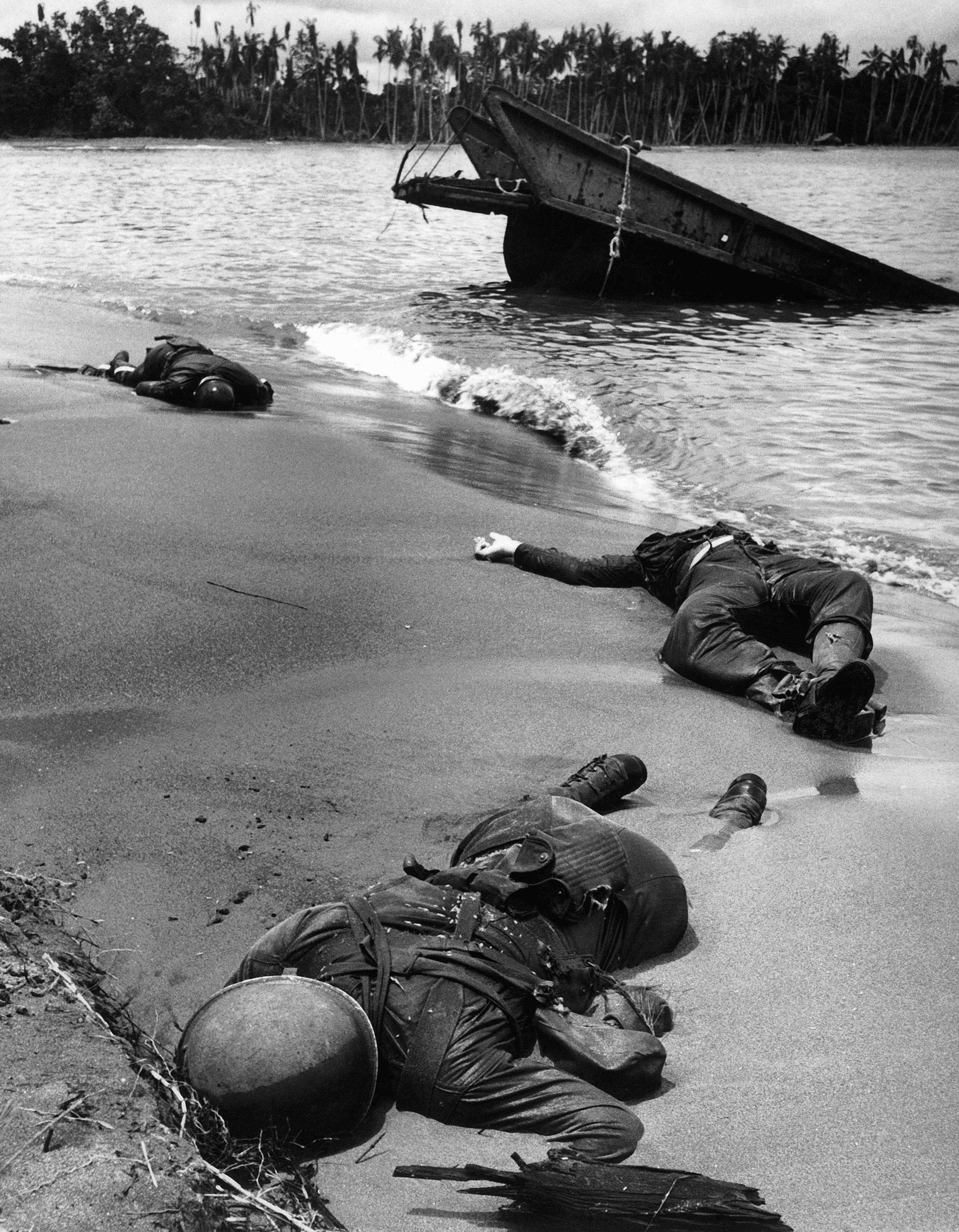
Guadalcanal. Iwo Jima. Okinawa. Bougainville. Saipan. These names, and the names of other battles and campaigns from the Pacific Theater during World War II, serve as a kind of brutal shorthand for scenes of unspeakable carnage and, at times, unfathomable courage.
But for reasons lost to the decades, countless other pivotal battles in the Pacific have been largely forgotten by most of the world—even as they’re remembered and commemorated by the dwindling number of those still alive who fought in them, and by those who lost husbands, brothers, fathers and friends to the war. The long, long, three-and-half-year New Guinea Campaign, for example, saw scores of battles as bloody and as strategically vital as any others fought during WWII, but the names and places of many of those battles and the places strike no chord with the general public.
Here, LIFE.com recalls one of those pivotal battles, the Battle of Buna-Gona, through pictures made by the master photojournalist George Strock—including one of the most famous and influential photographs ever taken in any war, anywhere: the disquieting image of three dead Americans half-buried in the sand at a place called Buna Beach.
What is ultimately so notable about Strock’s picture, however—beyond its sheer technical excellence, and its quiet power—is that when it was published in LIFE magazine in September 1943, it was the first time that any photograph depicting dead American troops had appeared in any American publication during World War II. The story behind how the photograph came to be published, meanwhile, speaks volumes about LIFE magazine’s national stature during the war, and the strained relationship that always exists (and, in an elemental way, should always exist) between journalists and government officials.
The short version of the story goes like this:
For months after Strock made his now-iconic picture, LIFE’s editors pushed the American government’s military censors to allow the magazine to publish that one photograph. The concern, among some at LIFE and certainly many in the government, was that Americans were growing complacent about a war that was far from over and in which an Allied victory was far from certain. A 25-year-old LIFE correspondent in Washington named Cal Whipple refused to take no for an answer from the censors and—as he put it in a memoir written for his family years later—he “went from Army captain to major to colonel to general, until I wound up in the office of an assistant secretary of the Air Corps, who decided, ‘This has to go to the White House.'”
In the Sept. 20, 1943, issue of LIFE, in which Strock’s photo first appeared (and in which it was given a full page to itself), the magazine’s editors made the case to LIFE’s readers for publishing the picture—even if it took the better part of a year to bring the censors and President Franklin Roosevelt himself around to their way of thinking:
Here lie three Americans [the editorial began].
What shall we say of them? Shall we say that this is a noble sight? Shall we say that this is a fine thing, that they should give their lives for their country?
Or shall we say that this is too horrible to look at?
Why print this picture, anyway, of three American boys dead upon an alien shore? Is it to hurt people? To be morbid?
Those are not the reasons.
The reason is that words are never enough. The eye sees. The mind knows. The heart feels. But the words do not exist to make us see, or know, or feel what it is like, what actually happens. The words are never right. . . .
The reason we print it now is that, last week, President Roosevelt and [Director of the Office of War Information] Elmer Davis and the War Department decided that the American people ought to be able to see their own boys as they fall in battle; to come directly and without words into the presence of their own dead.
And so here it is. This is the reality that lies behind the names that come to rest at last on monuments in the leafy squares of busy American towns.
There is much, much more in the editorial, including a great deal of soaring rhetoric about America as a symbol of freedom; a paean to an archetypal “stout, gray-haired woman” baking apple pie; and always, the image of “our boys, born of our women, reared in our schools, bred to our horizons. . . . ”
Much of the language feels at-once stirring and oddly stilted today. But the editorial’s earnestness, and the conviction—evident in every line—of having done the right thing in publishing Strock’s picture, reminds us that 70 years ago, men and women still believed that a single photograph could make a difference. And who’s to say, in the end, that Strock’s photograph, and LIFE’s insistence on publishing it, didn’t do exactly that?
Liz Ronk, who edited this gallery, is the Photo Editor for LIFE.com. Follow her on Twitter at @LizabethRonk.

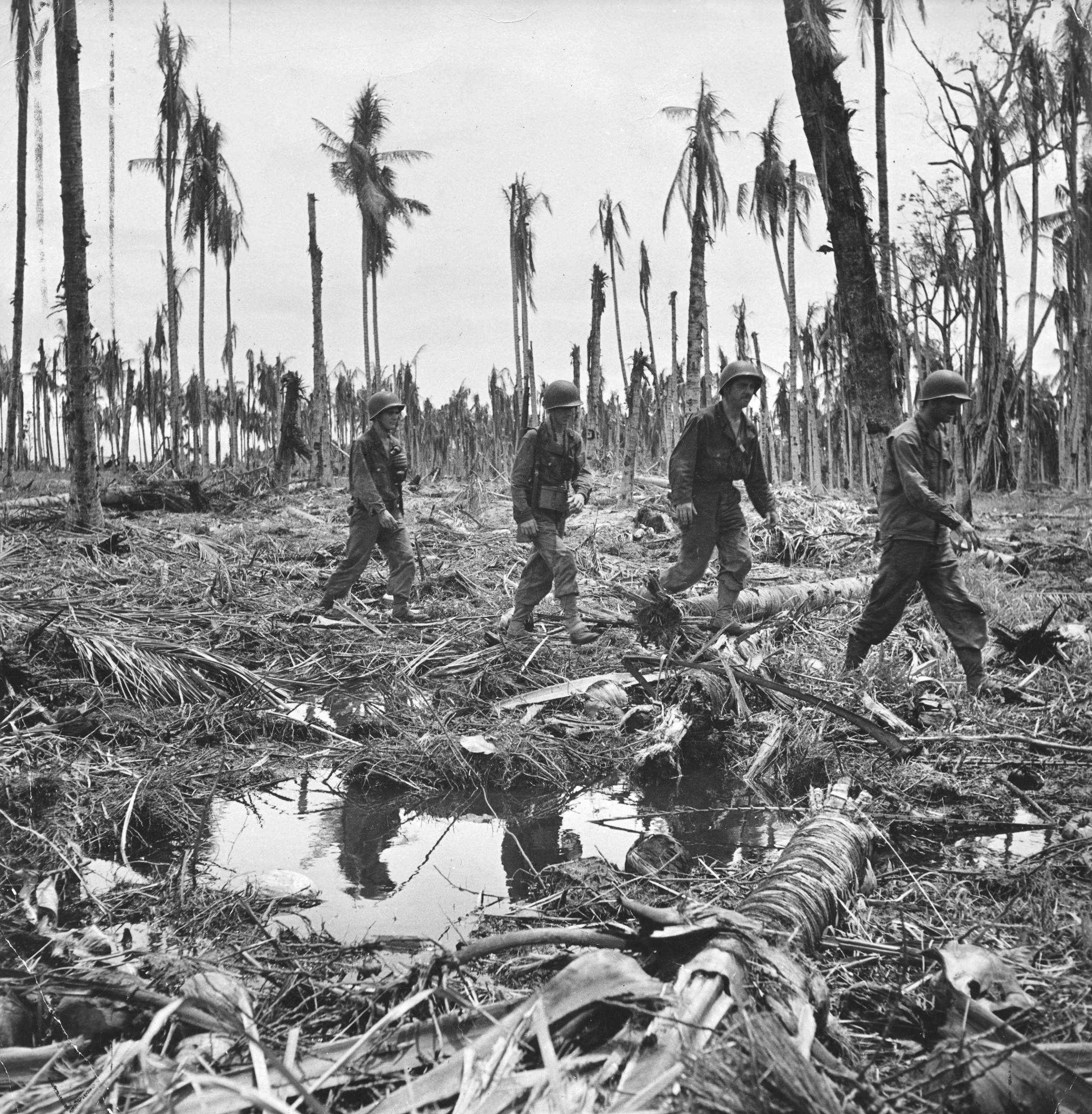
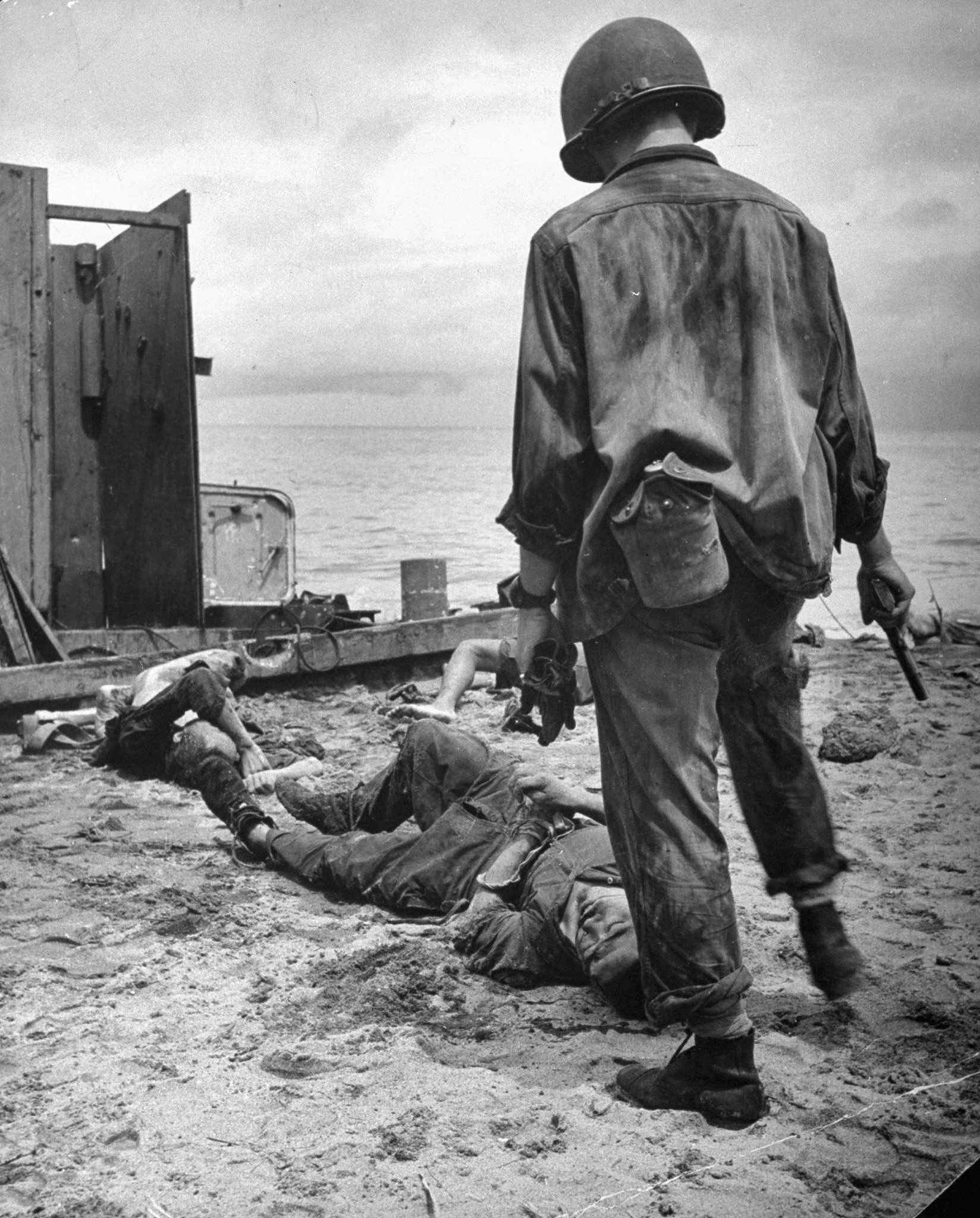
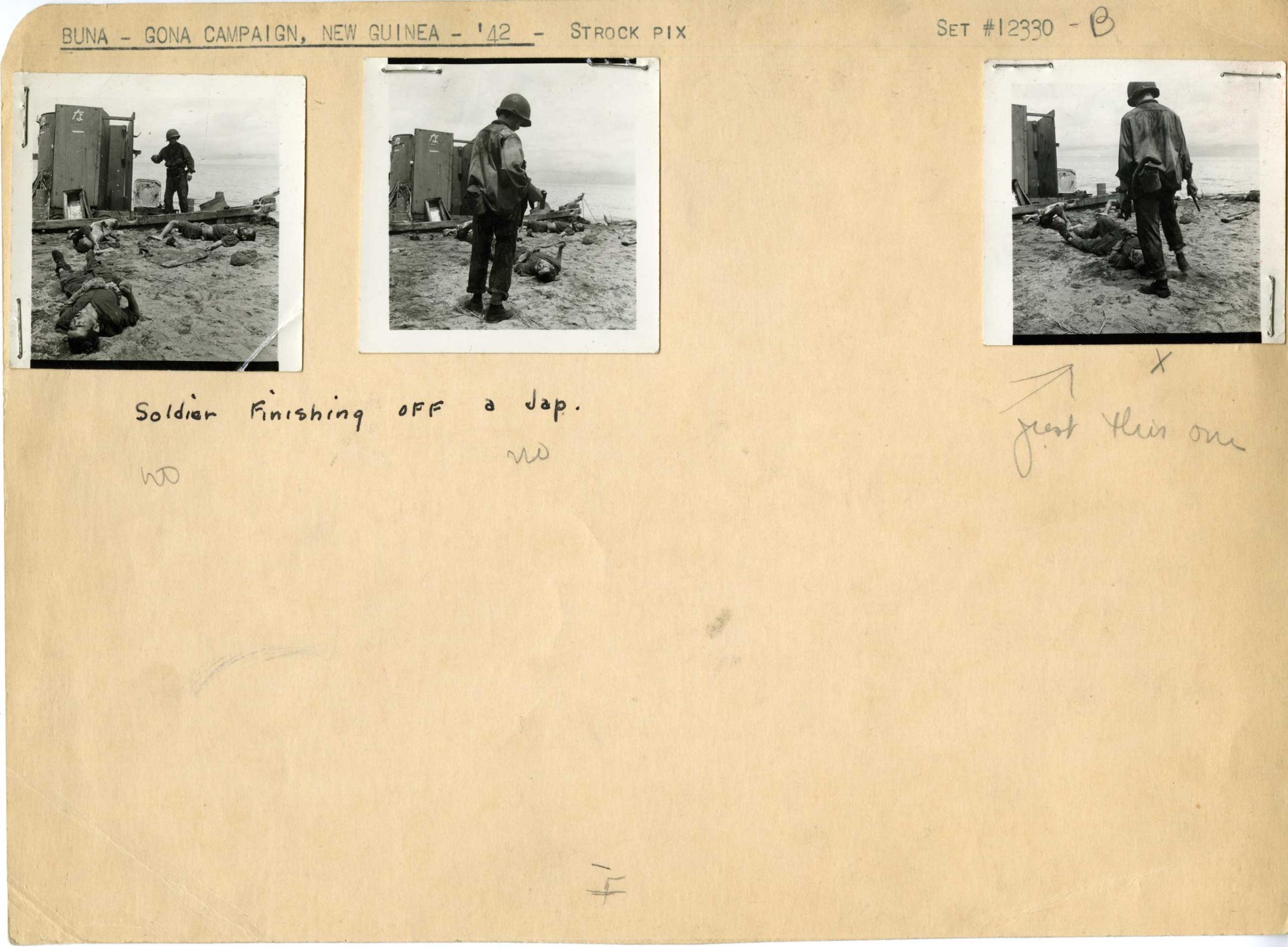
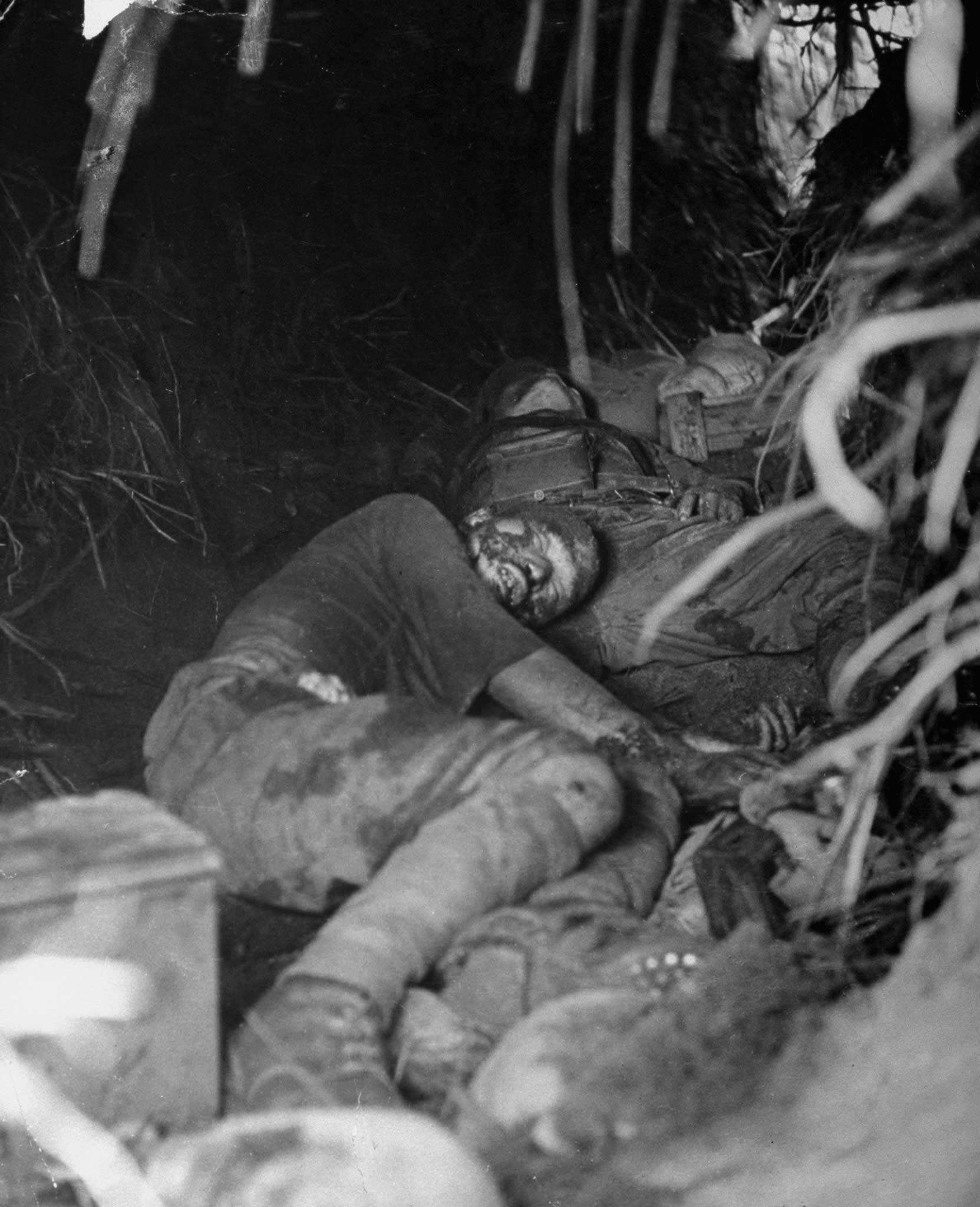

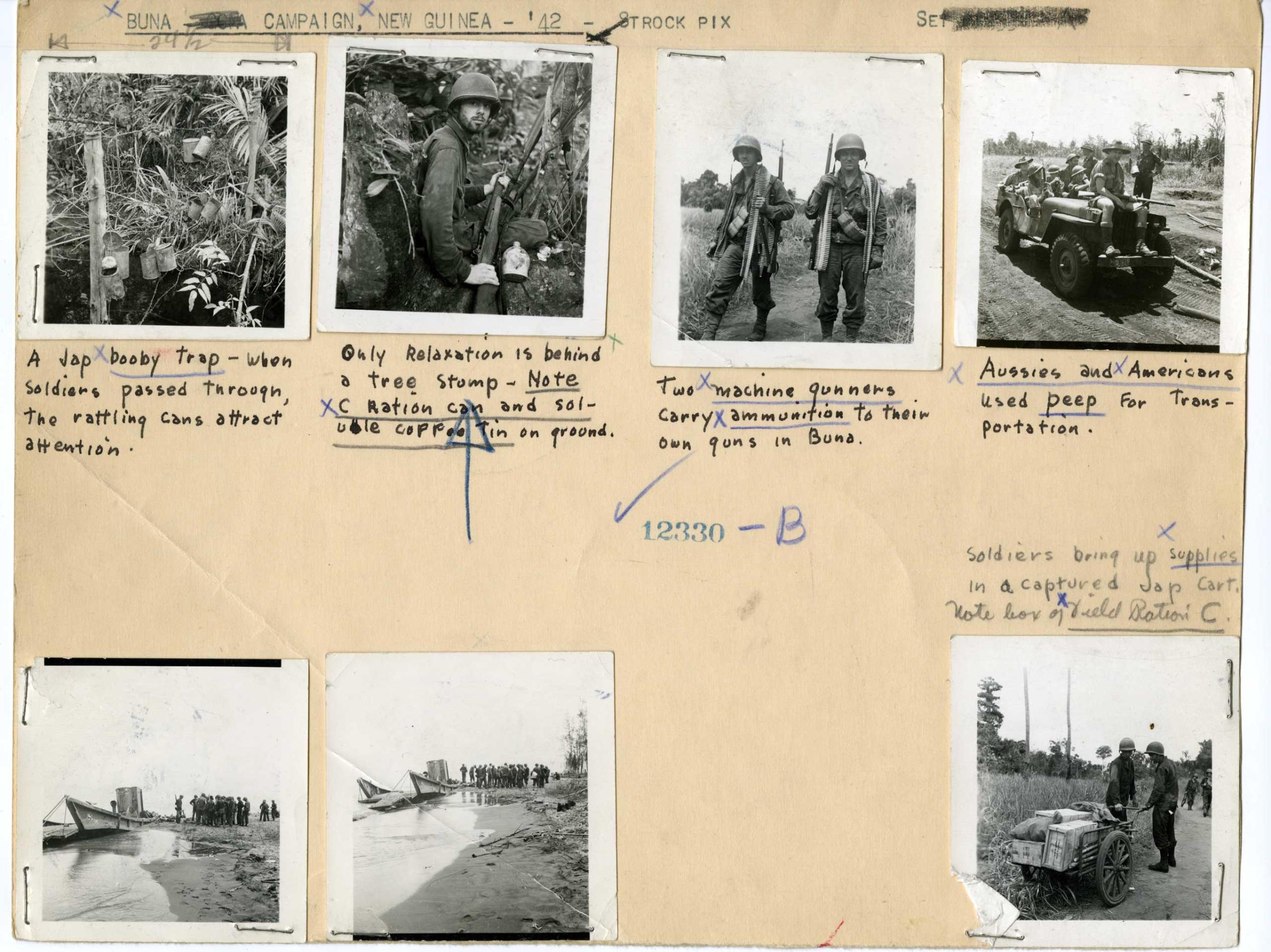
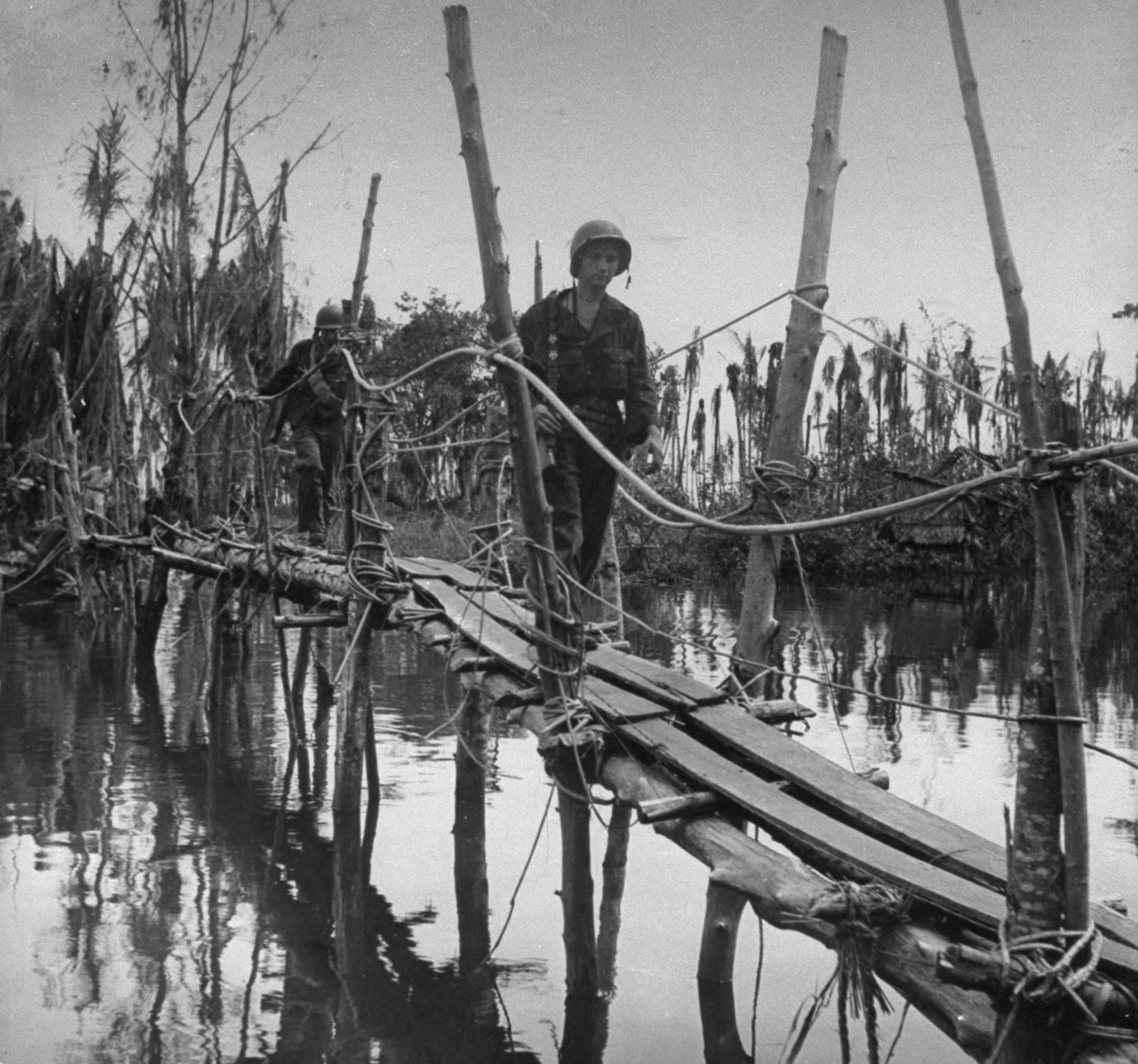
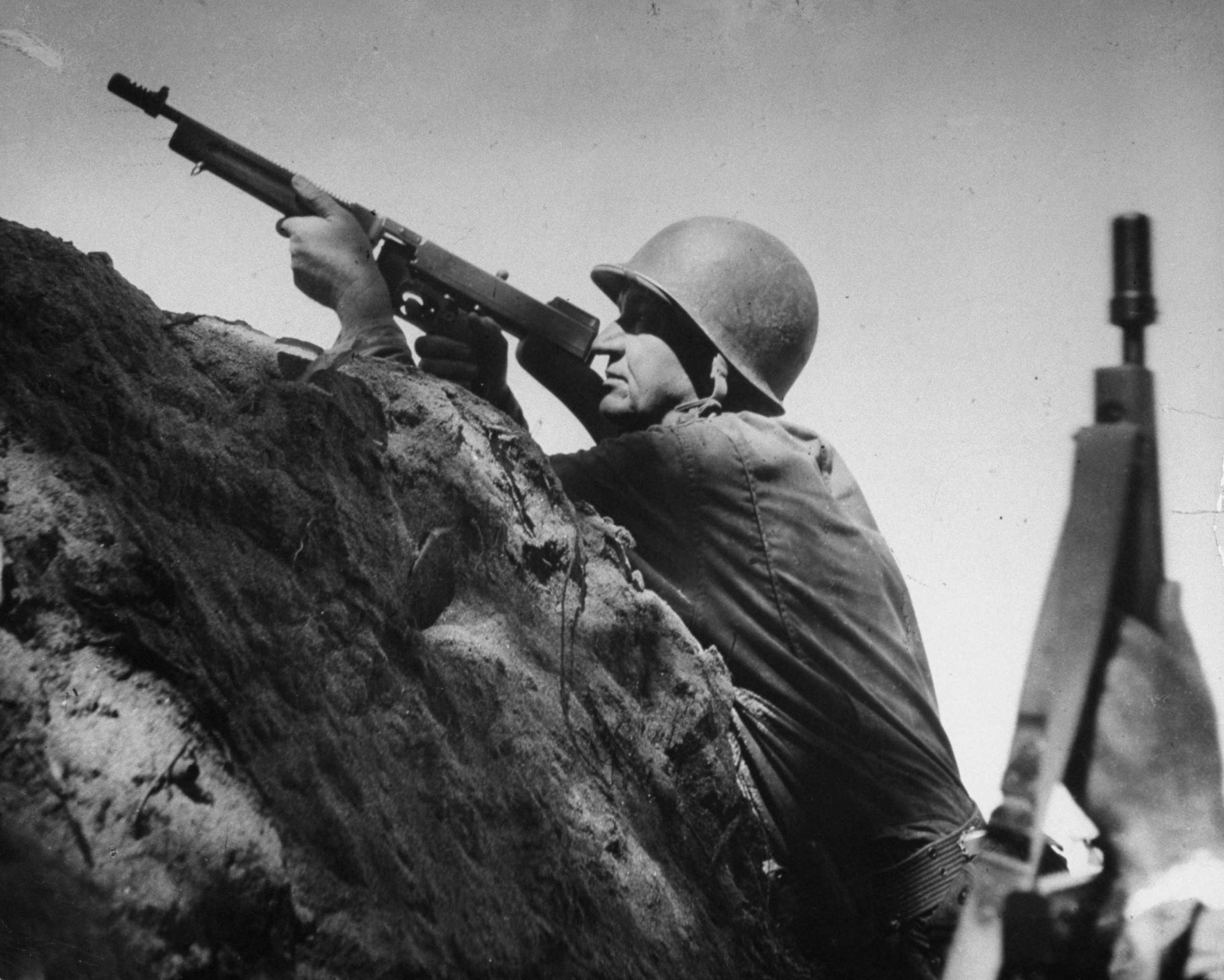

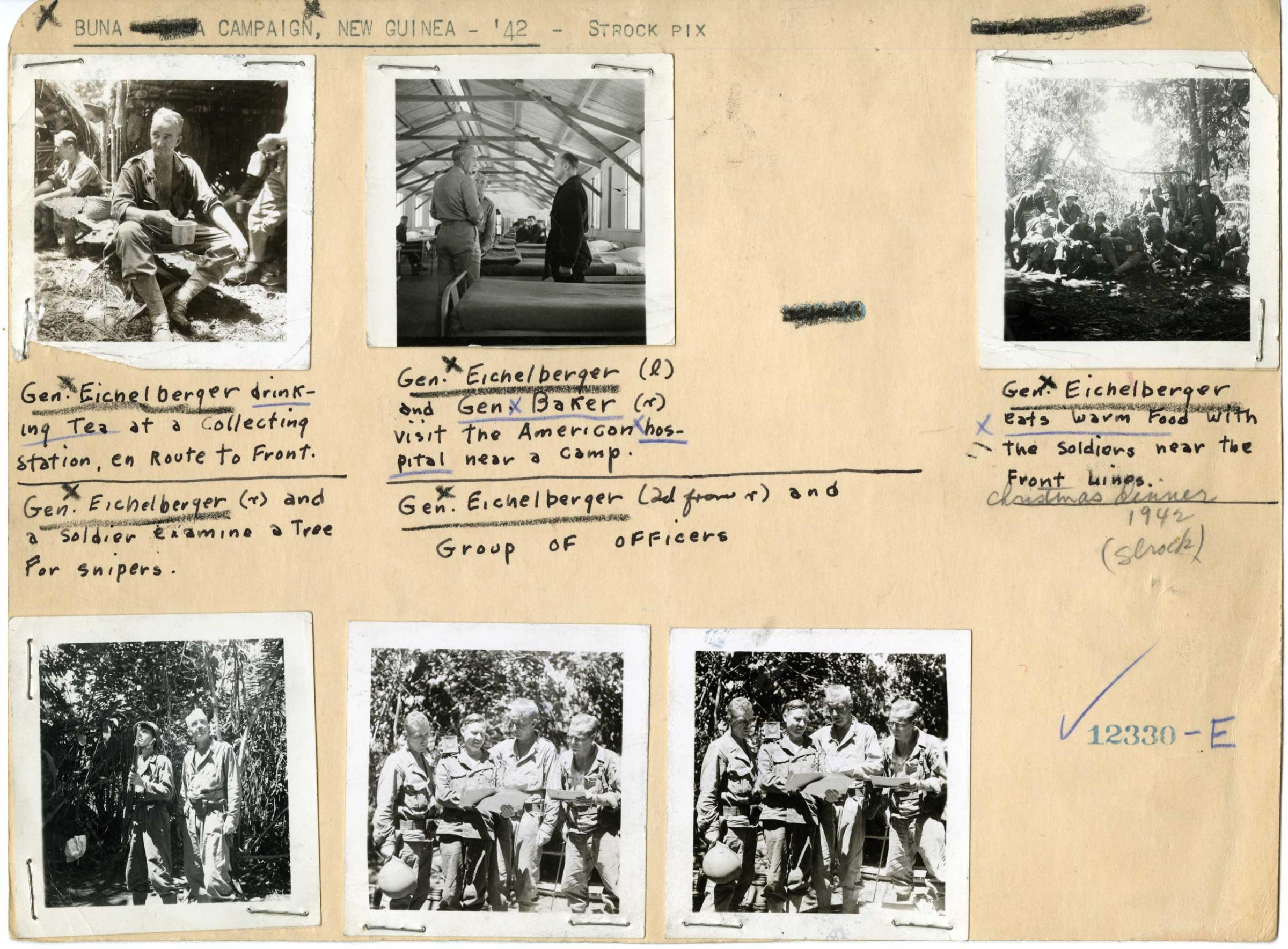
![<b>Caption from LIFE.</b> "The general [Eichelberger] gives cigarets to a dripping soldier taking a bath in a swamp creek. These cigarets were his own personal issue. In the beginning of the campaign they were especially scarce." "The general [Eichelberger] gives cigarets to a dripping soldier taking a bath in a swamp creek. These cigarets were his own personal issue. In the beginning of the campaign they were especially scarce."](https://api.time.com/wp-content/uploads/2014/10/wwii-buna-beach-george-strock-12.jpg?quality=75&w=2400)
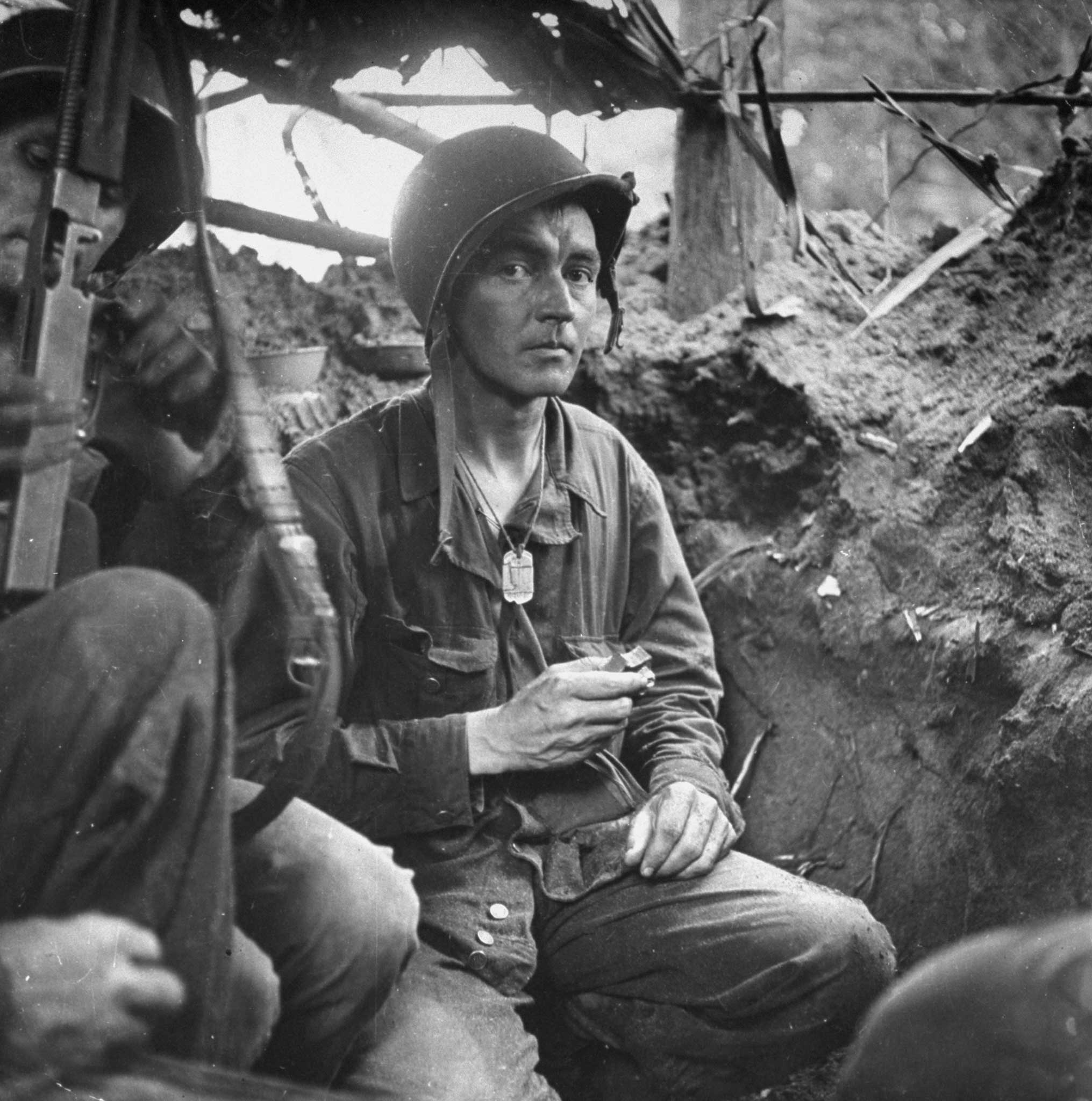
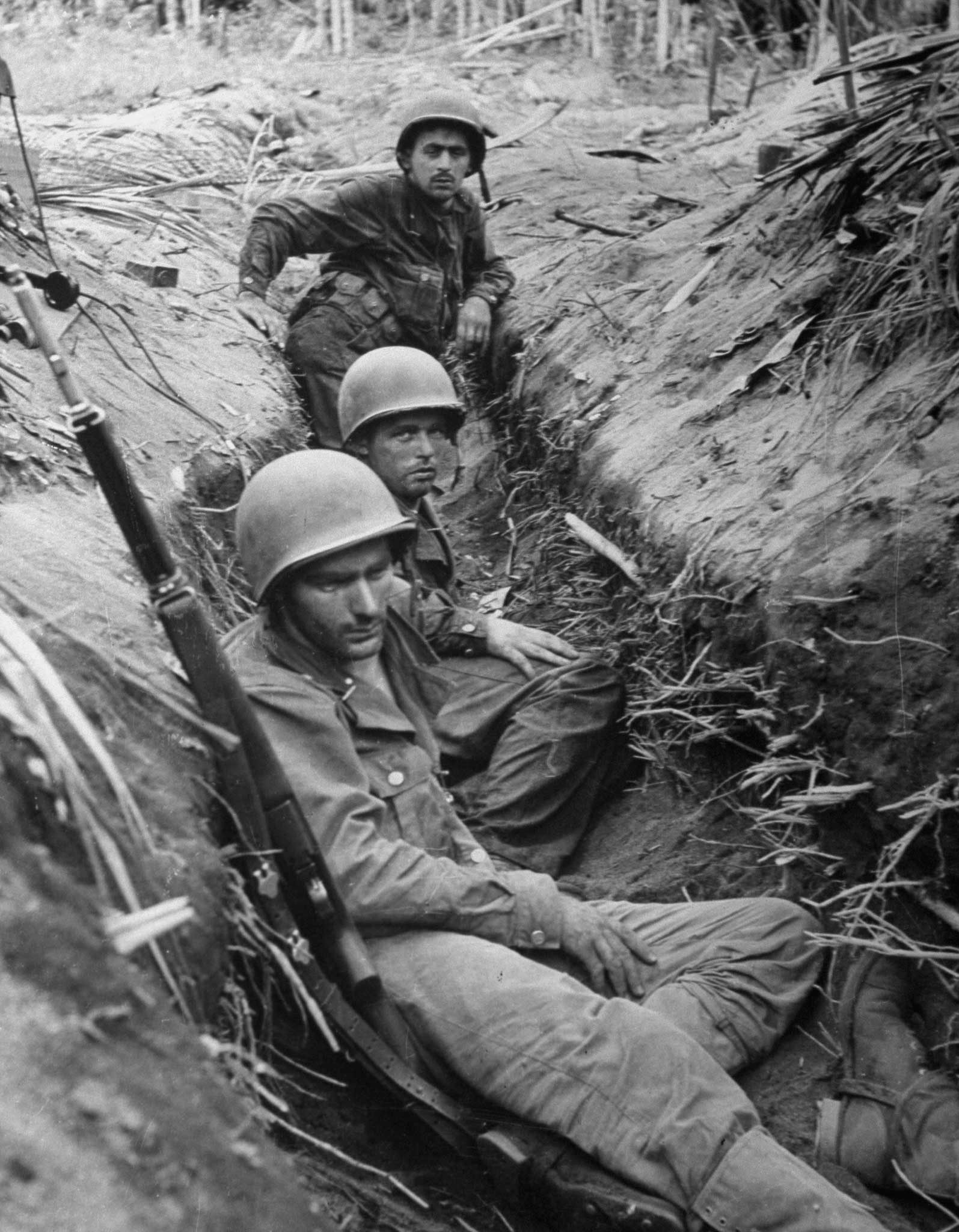
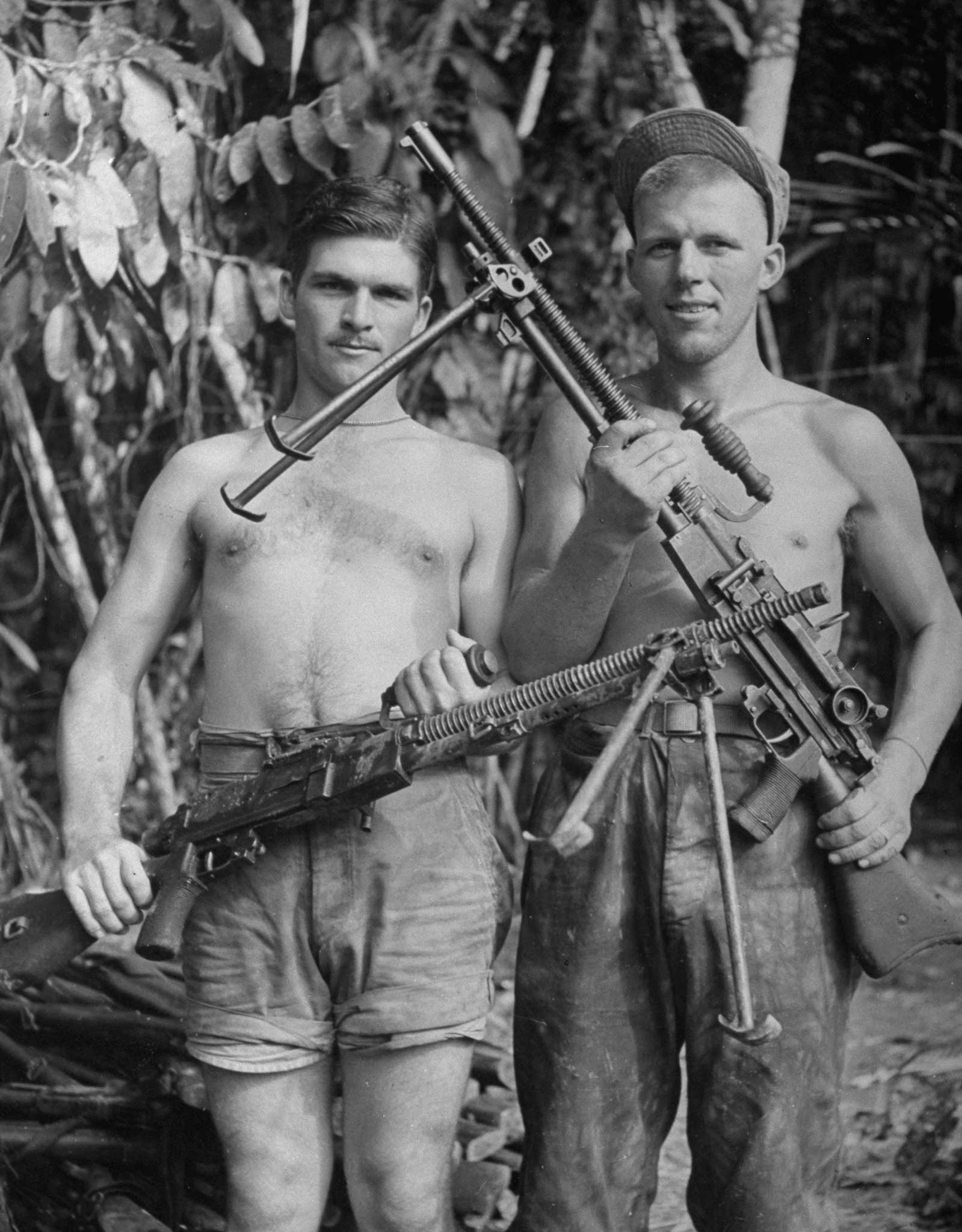
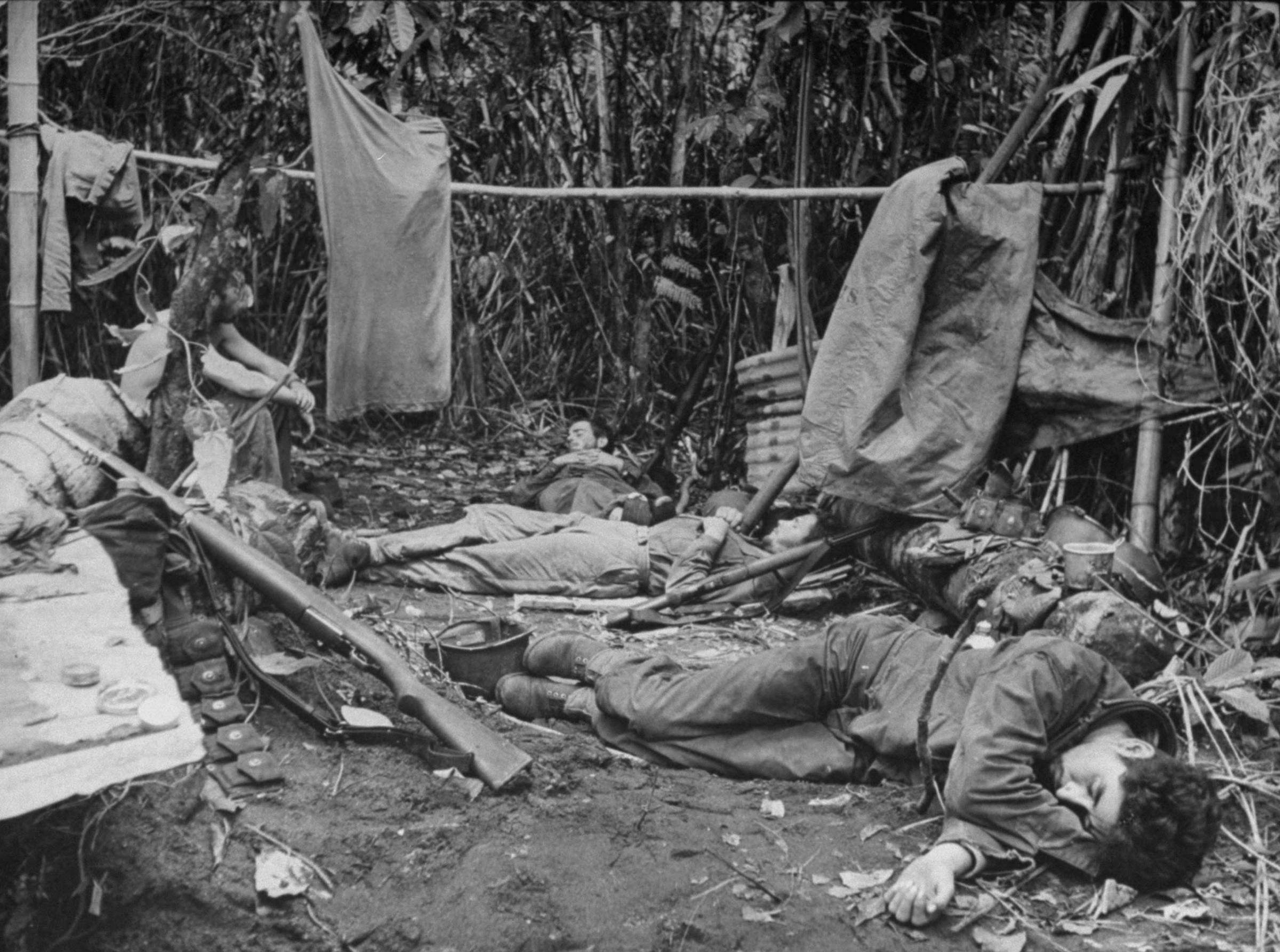
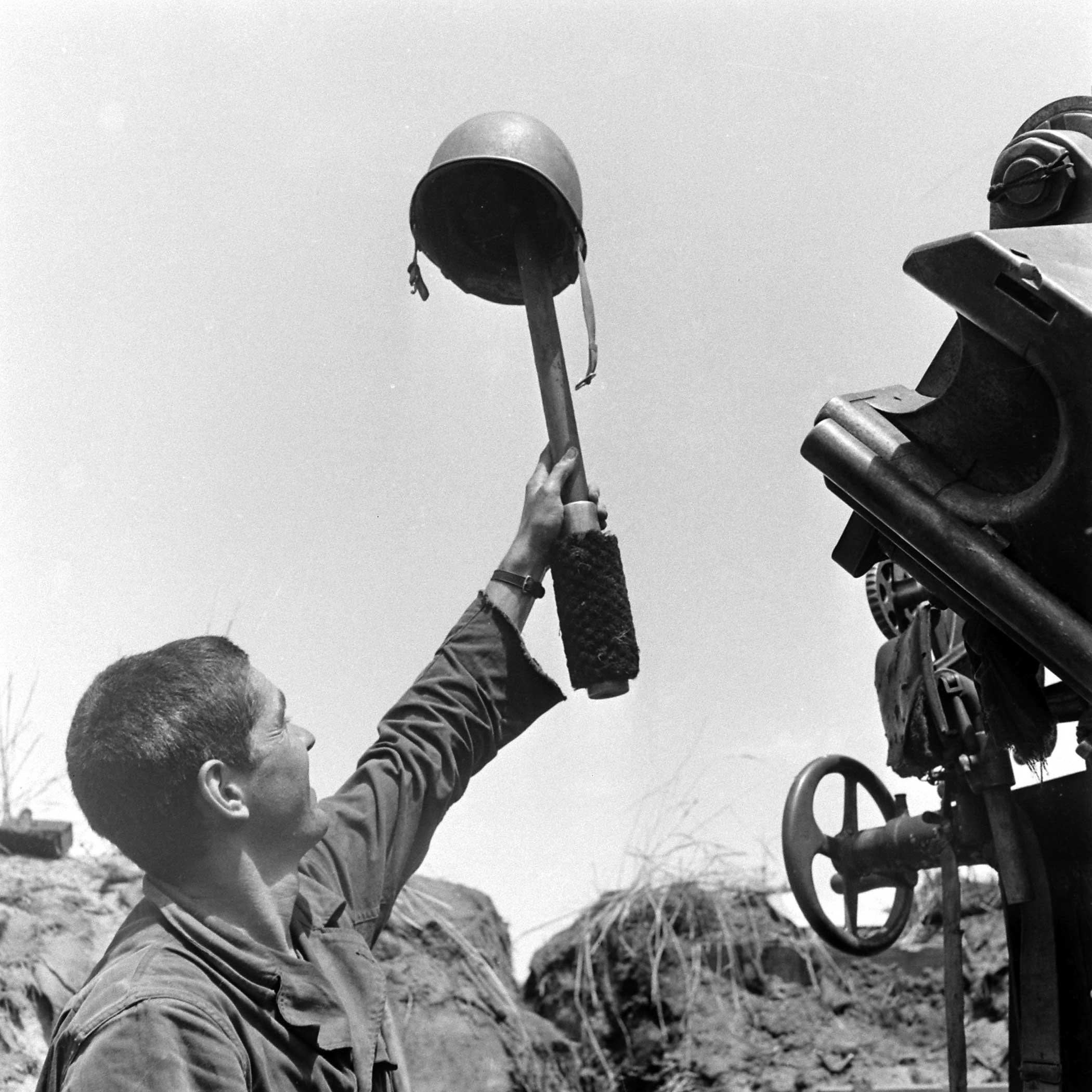

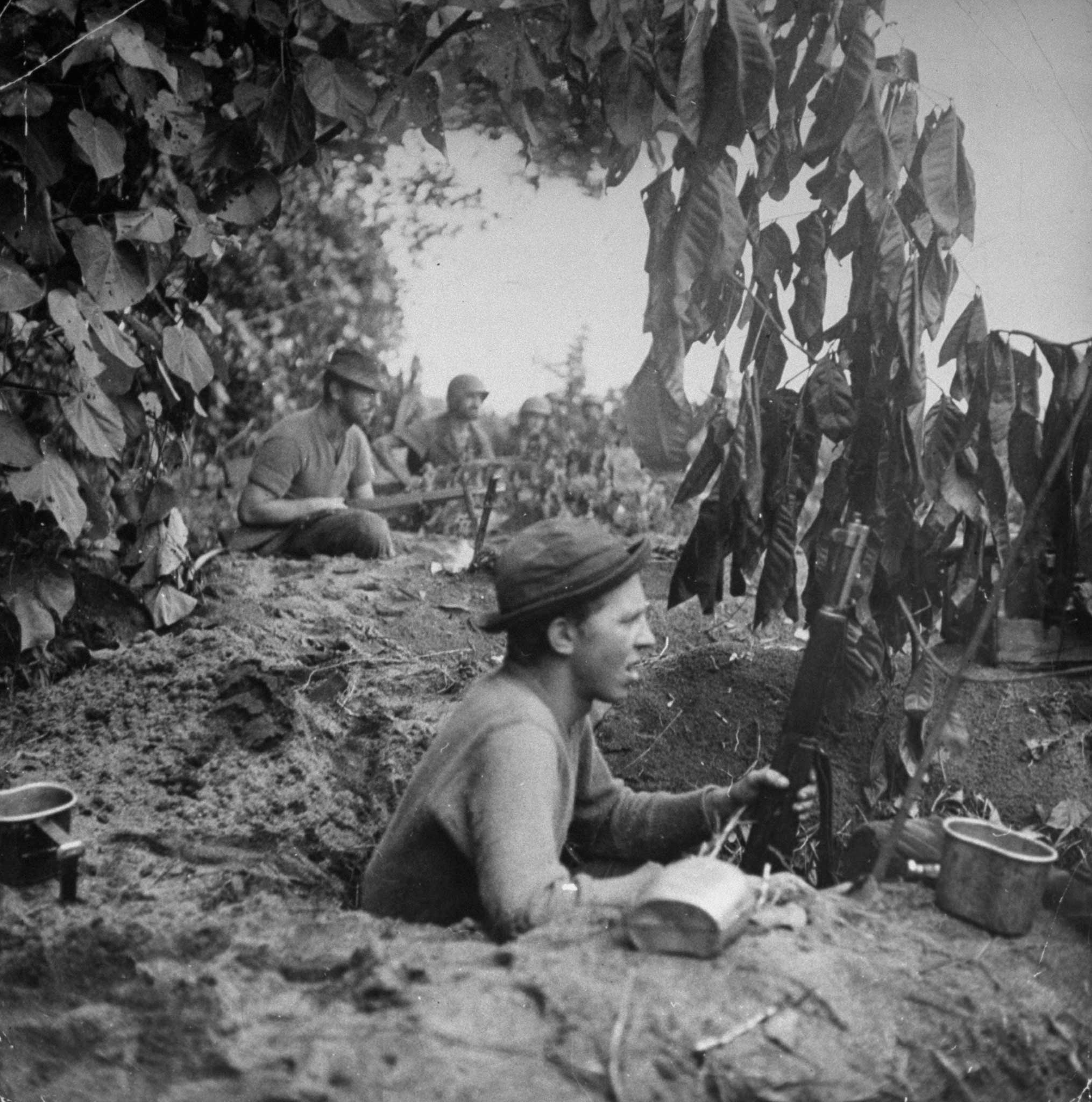




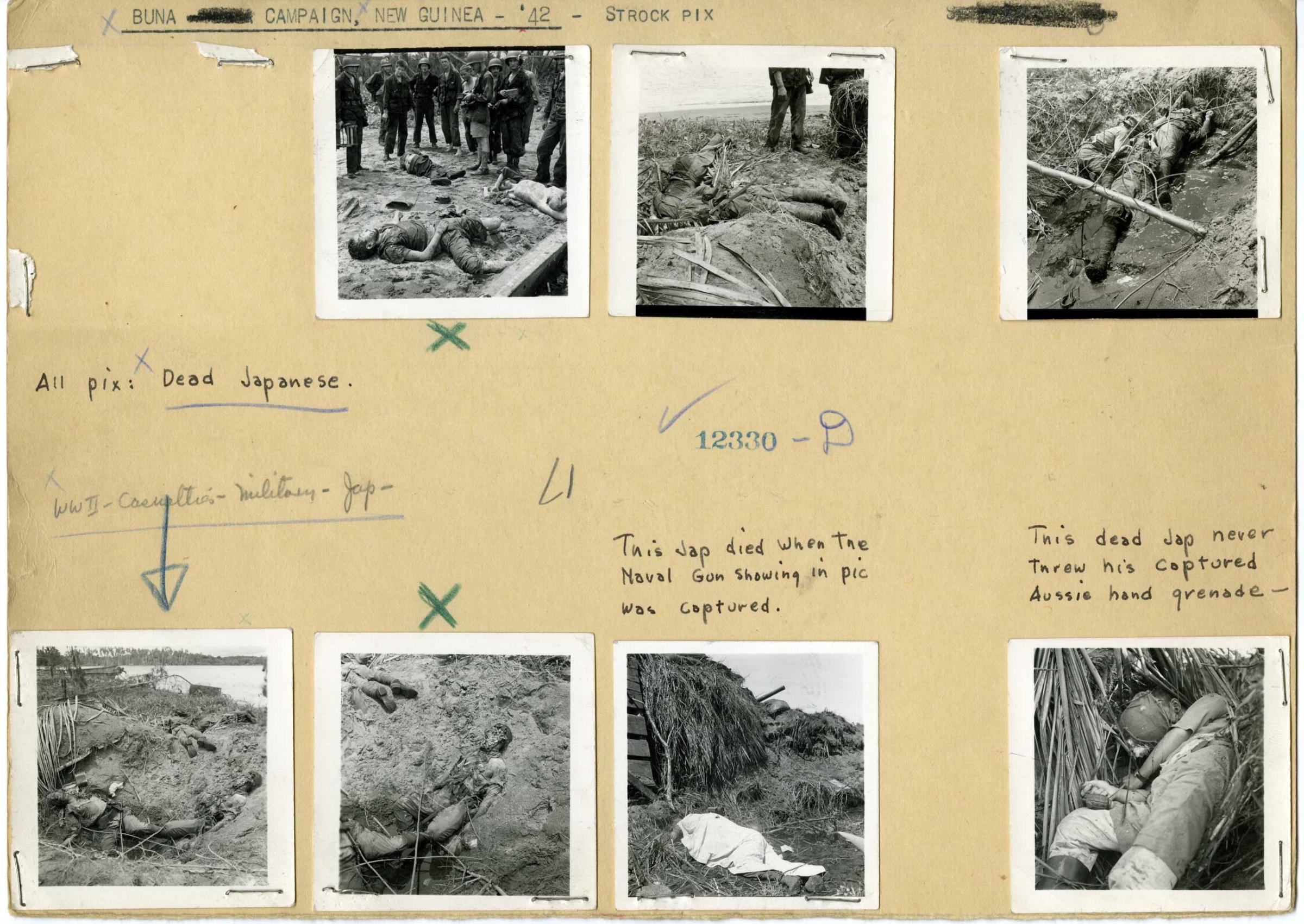
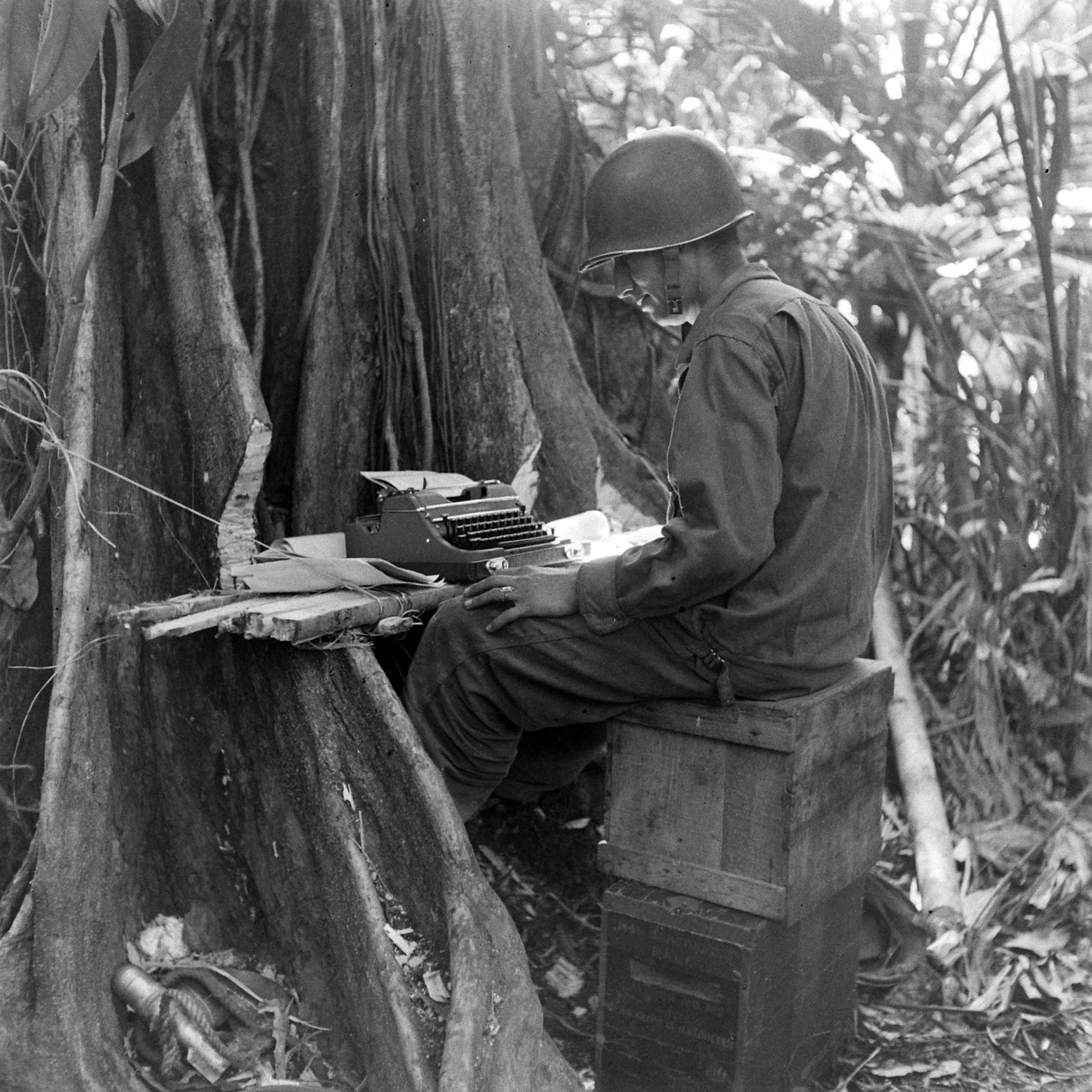
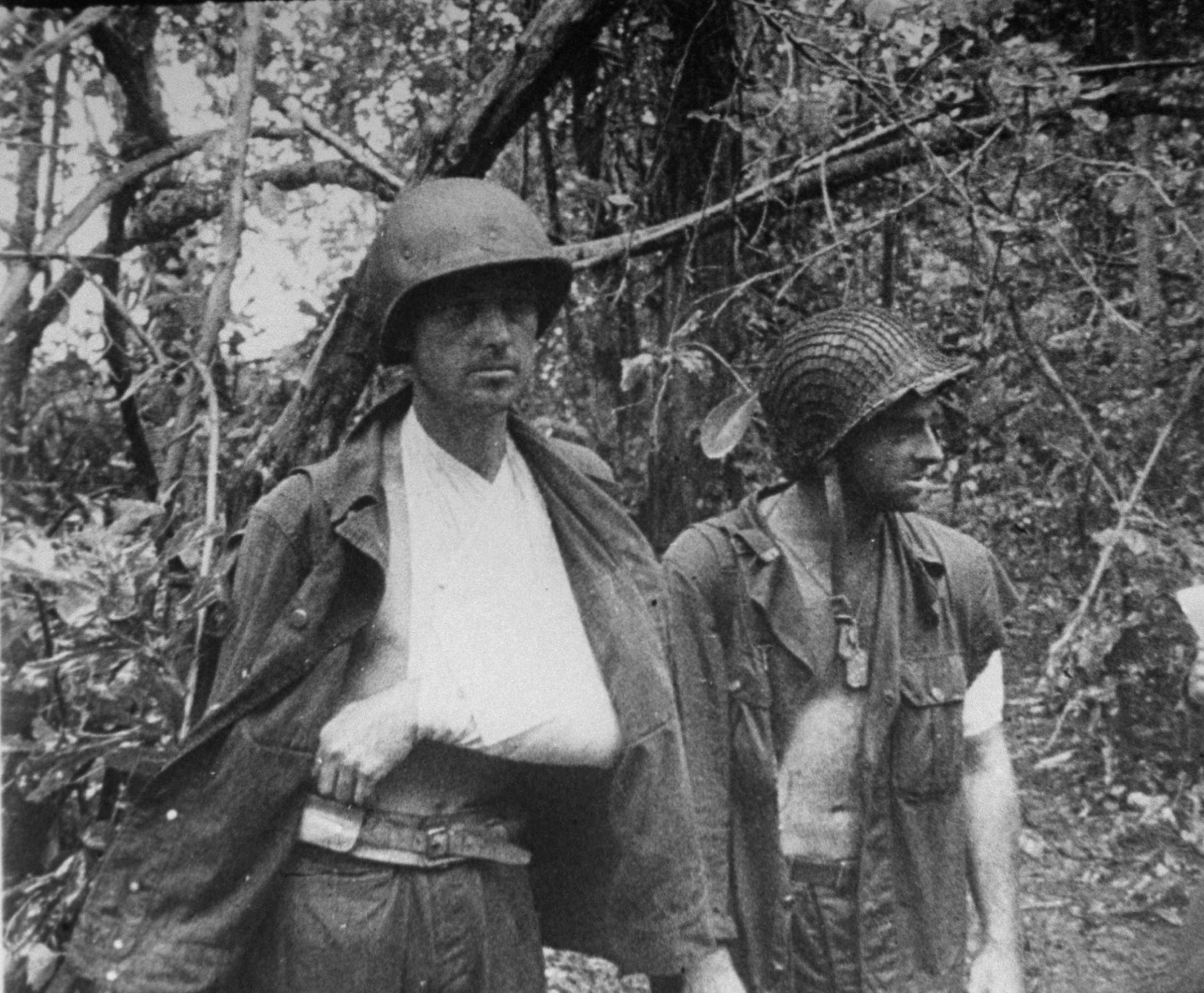

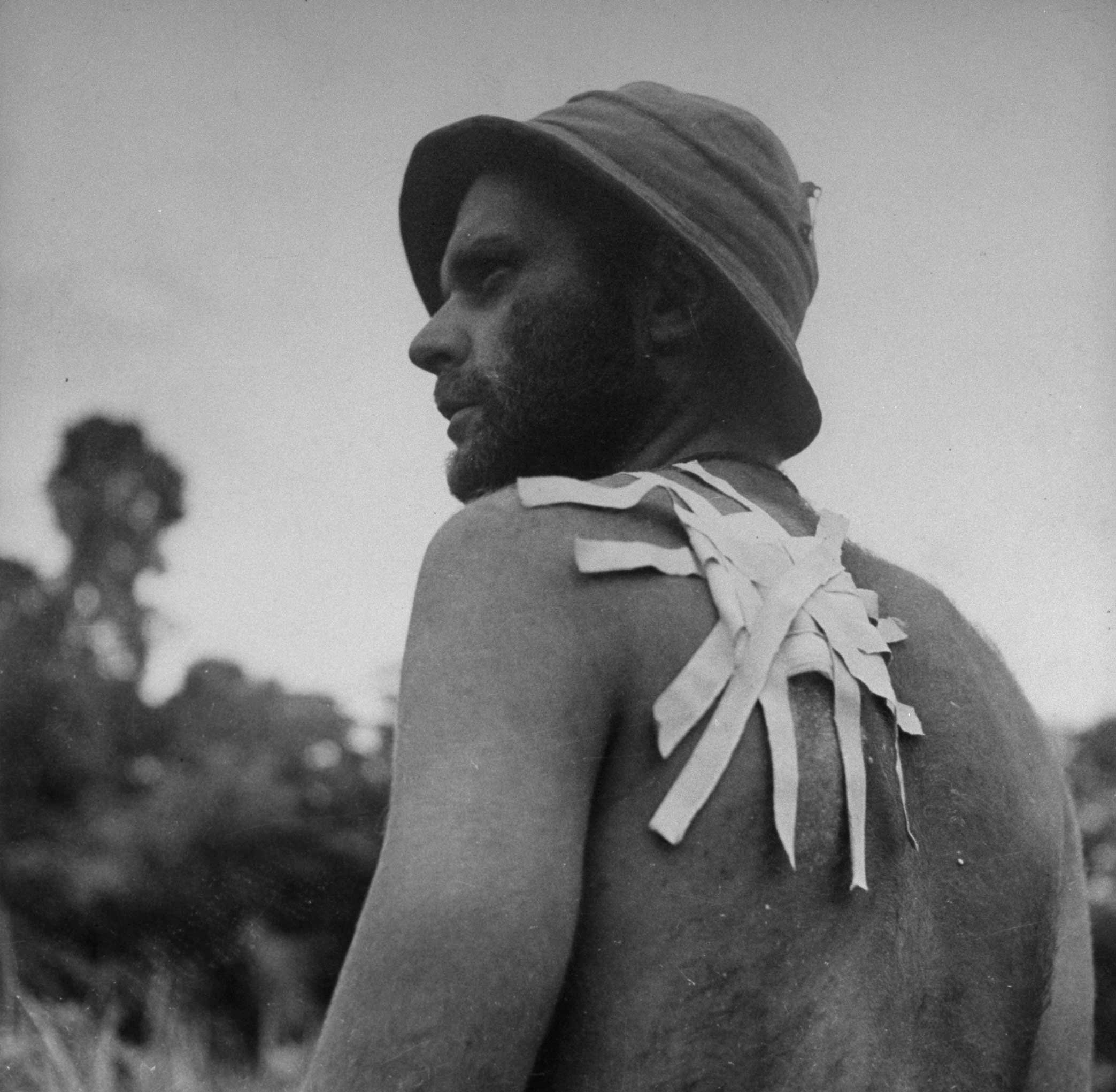

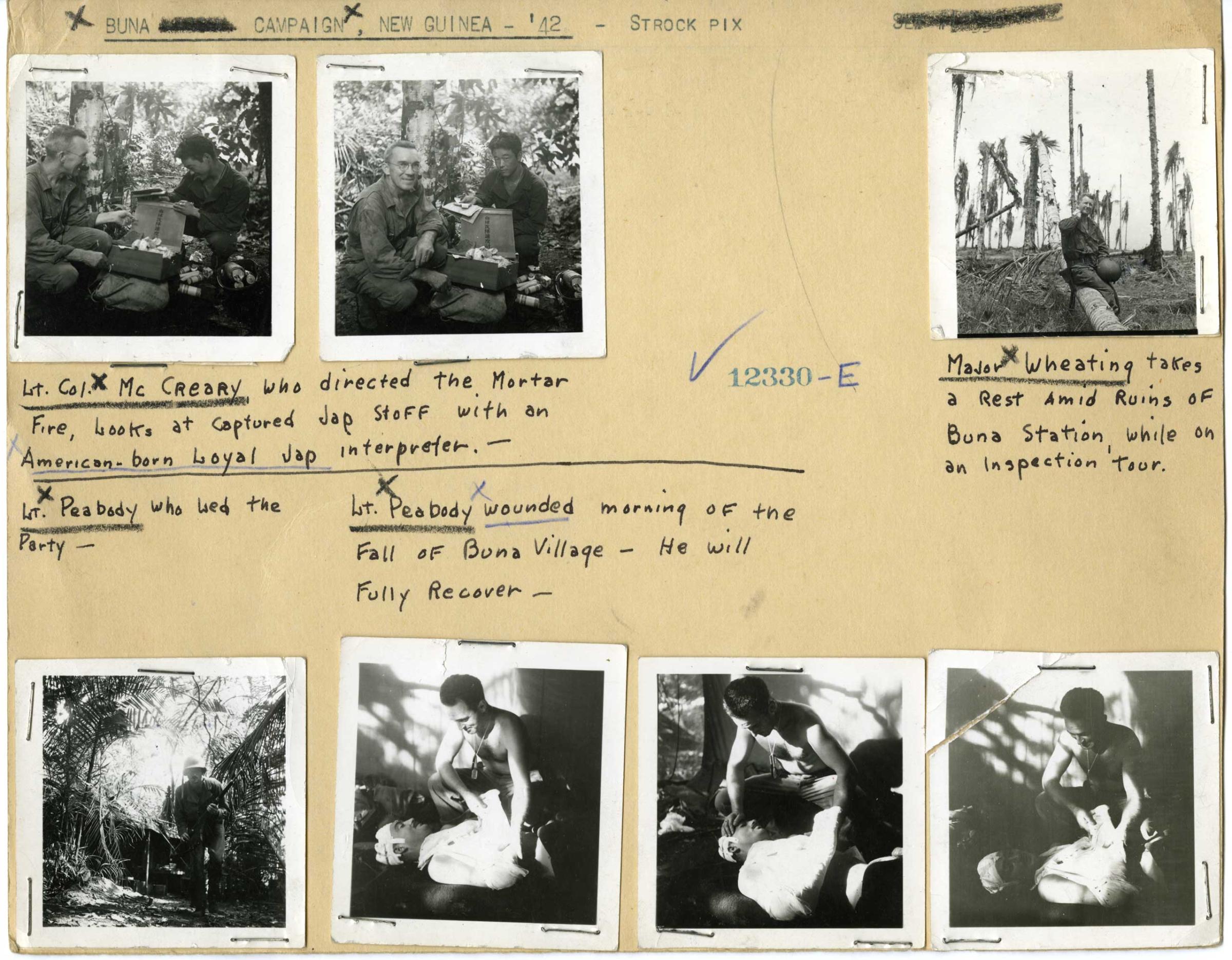
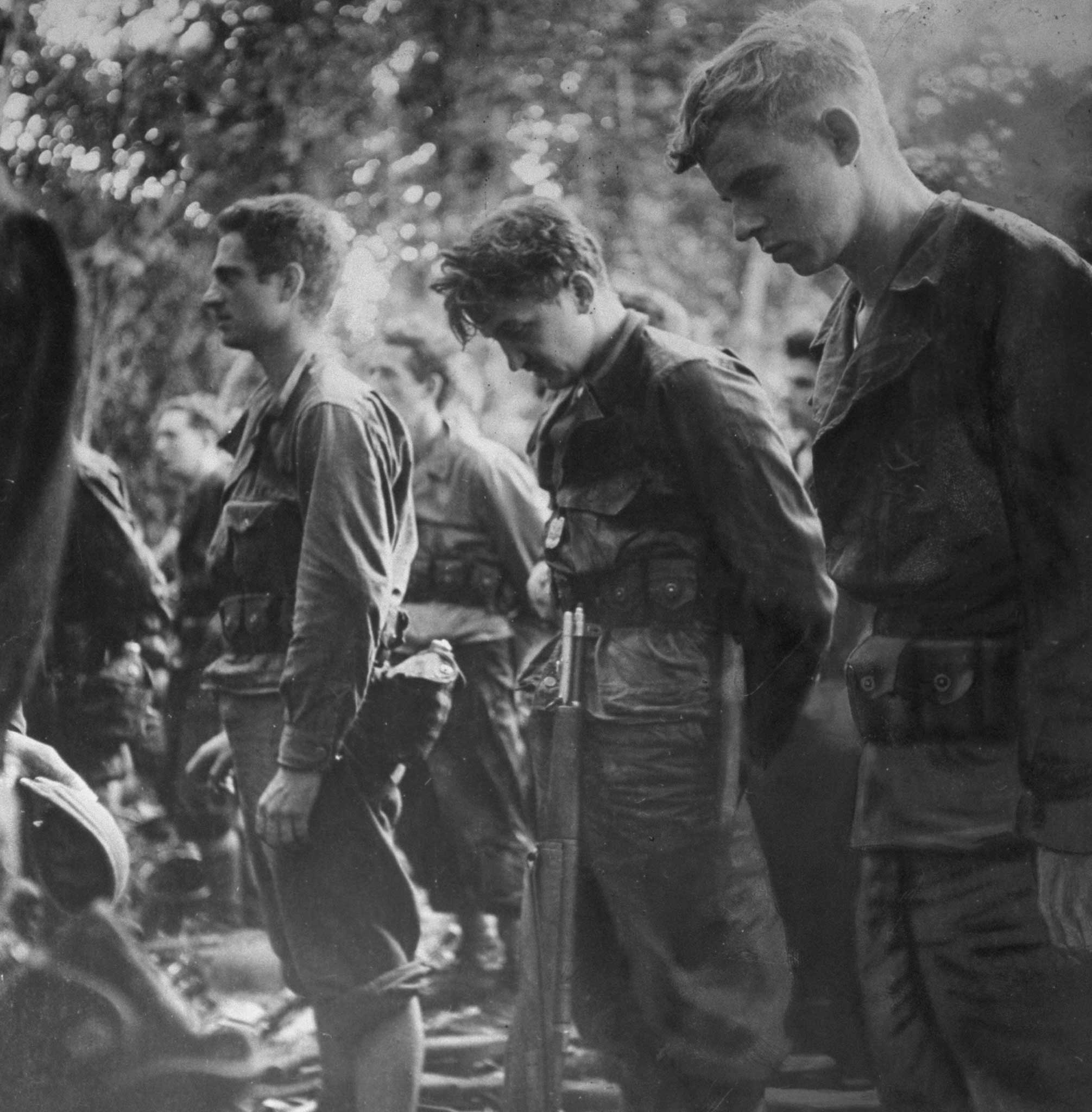
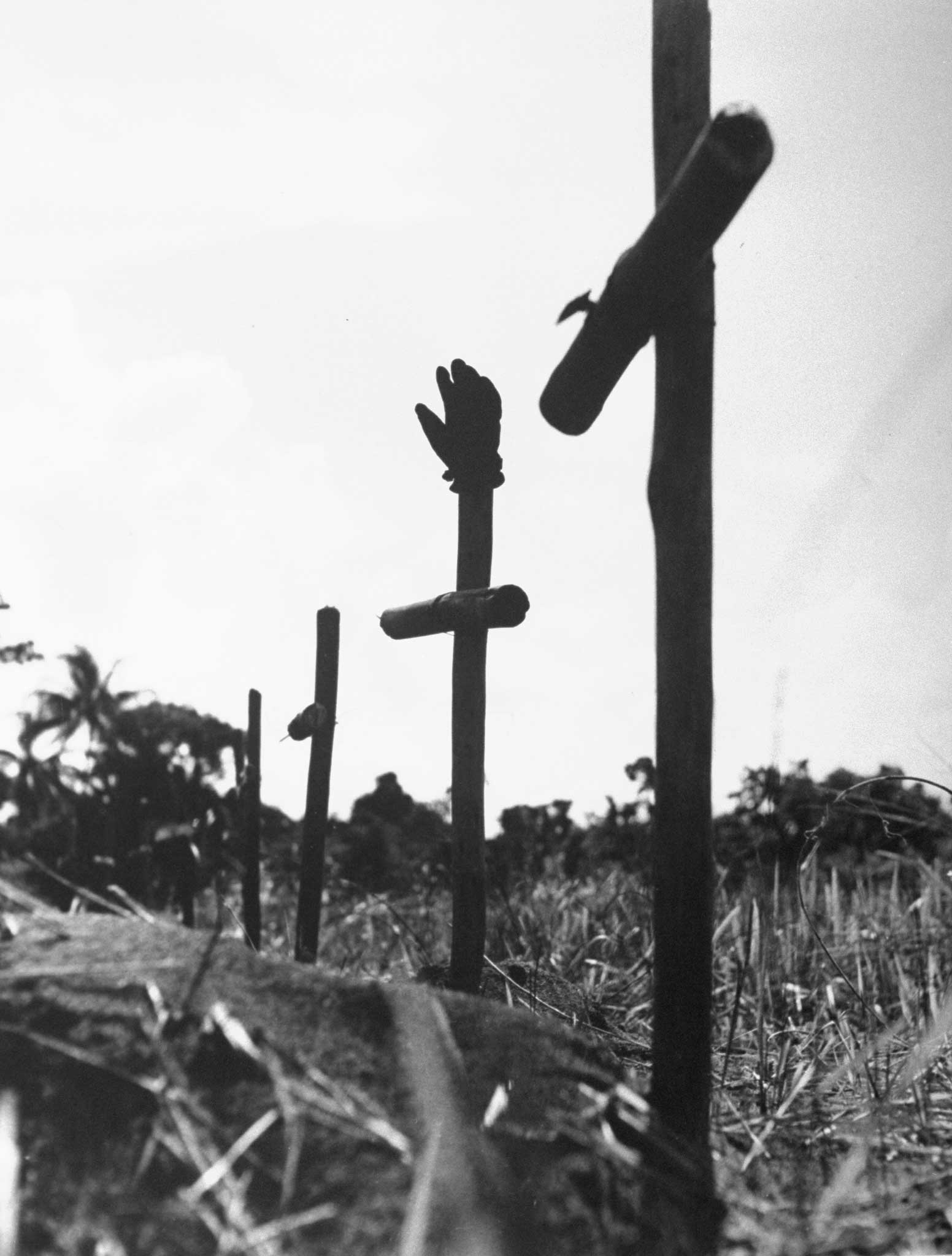
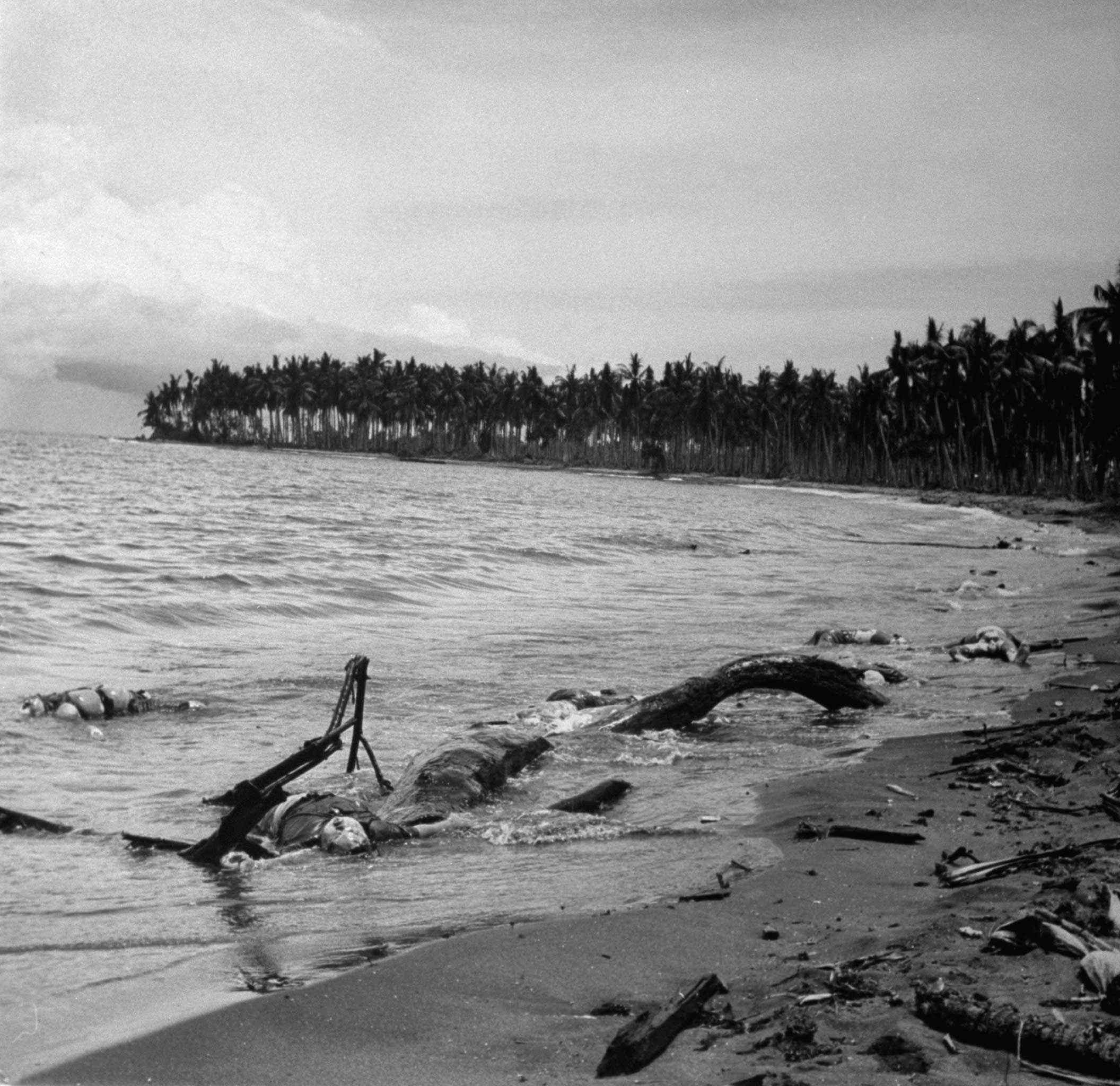
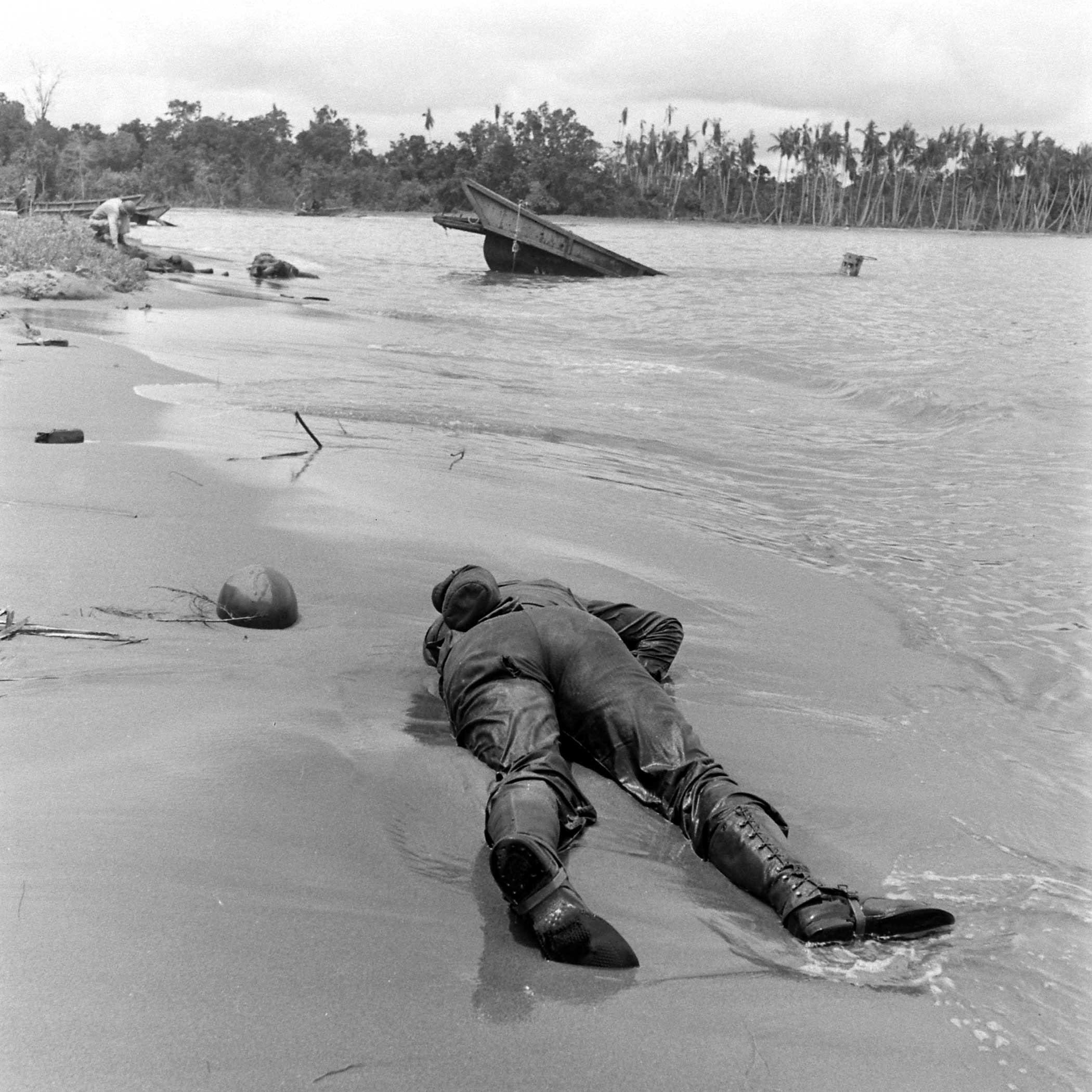
More Must-Reads from TIME
- Cybersecurity Experts Are Sounding the Alarm on DOGE
- Meet the 2025 Women of the Year
- The Harsh Truth About Disability Inclusion
- Why Do More Young Adults Have Cancer?
- Colman Domingo Leads With Radical Love
- How to Get Better at Doing Things Alone
- Michelle Zauner Stares Down the Darkness
Contact us at letters@time.com